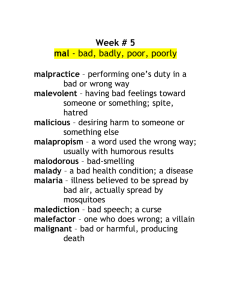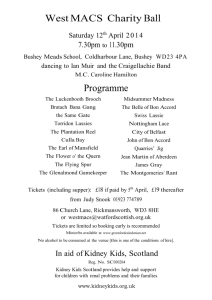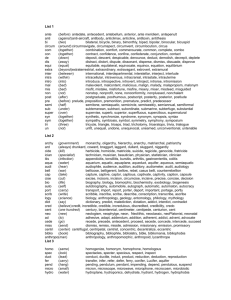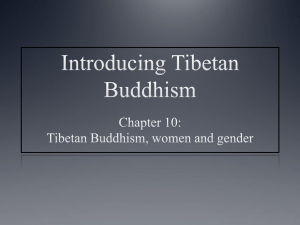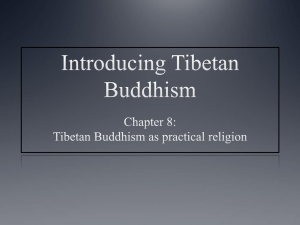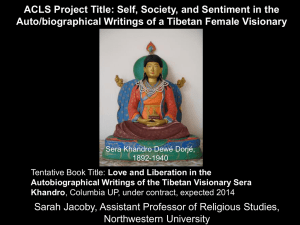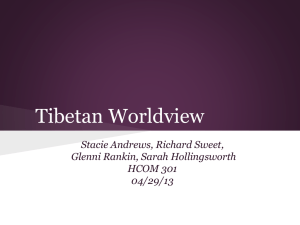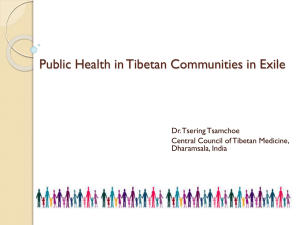Chapter 11
advertisement
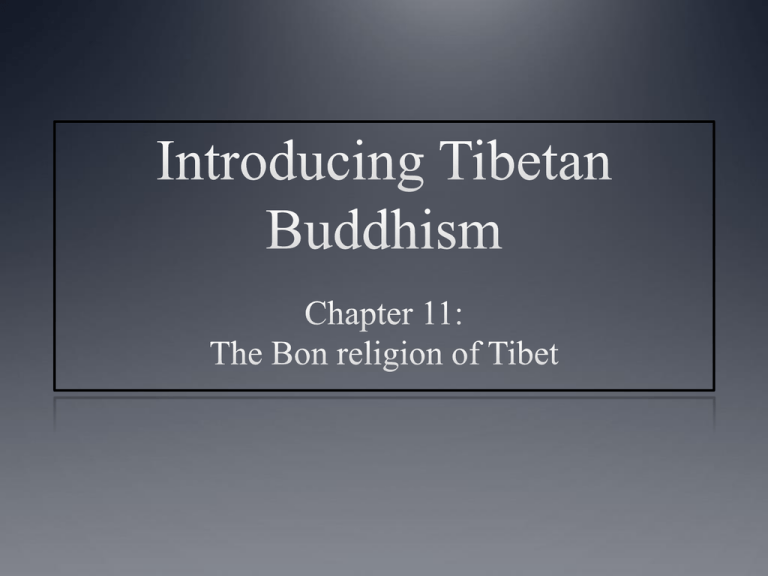
Main topics covered • Introduction • Yungdrung Bon • Bonpo narratives and teachings • Bonpo history and the relationship with Buddhism • The history of Bon studies • Modern developments • Conclusion Key points 1 • The term Bon has been used to describe several different aspects of Tibetan religion that are only loosely connected with each other, if at all. The main subject of this chapter, Yungdrung Bon, is essentially a variant of Tibetan Buddhism that developed in the tenth and eleventh centuries, with close resemblances to Nyingmapa Buddhism in particular. It claims to have preBuddhist origins and probably preserves at least some genuinely ancient features. • The followers of the Bon tradition, perhaps 5 to 10% of the Tibetan population, were traditionally discriminated against by Tibetan Buddhists, but have now been recognised by the 14th Dalai Lama as a fifth major tradition of Tibetan Buddhism. Key points 2 • This tradition, Yungdrung Bon, is in many ways similar to Tibetan Buddhism, but claims to originate in a different teacher, Tönpa Shenrap, is connected with different deities and has a different set of myths and stories. • The term Bon is also used to refer to a class of priests during the early Tibetan Empire, and to a variety of village-level religious practitioners found along the Himalayas and elsewhere in Tibetan regions, who seem mainly concerned with invocations to local deities. Yungdrung Bon temple Temple at Bongya Monastery, Rebkong, photo 2010 Key points 3 • The founder of Yungdrung Bon, Tönpa Shenrab (Shenrab Mibo), is believed to have been a Buddha who achieved Buddhahood many hundred years before the historical Buddha Śākyamuni, in a country to the west of Tibet known as Ölmo Lungring, perhaps corresponding to parts of present-day Iran or Central Asia. • Tönpa Shenrab is said to have visited Central Tibet, but his teachings are claimed to have been passed down through the kingdom of Shangshung in what is now western Tibet. Most were lost during periods of persecution, so that with few exceptions the Yungdrung Bon practice lineages today derive from terma revelations. Tönpa Shenrap Tönpa Shenrap. Bongya Monastery, Rebkong , photo 2010 Key points 4 • Bonpo deities and rituals resemble and in many cases are used for the same purposes as Buddhist deities and rituals, though the names and detailed iconography are usually different. • Bon mythology, such as their account of the creation of the world, may preserve genuine early Tibetan material. Chamma and Tārā Left, the Bonpo goddess Chamma. Tsiwu Gompa, Qinghai, photo 2010. Right, the Buddhist goddess White Tārā Phurba The Bon deity Phurba. Triten Norbutse, Kathmandu, photo 2006 Sipé Gyelmo (Queen of Existence) The Bon goddess Sipé Gyelmo. Triten Norbutse, Kathmandu. Photo 2006
